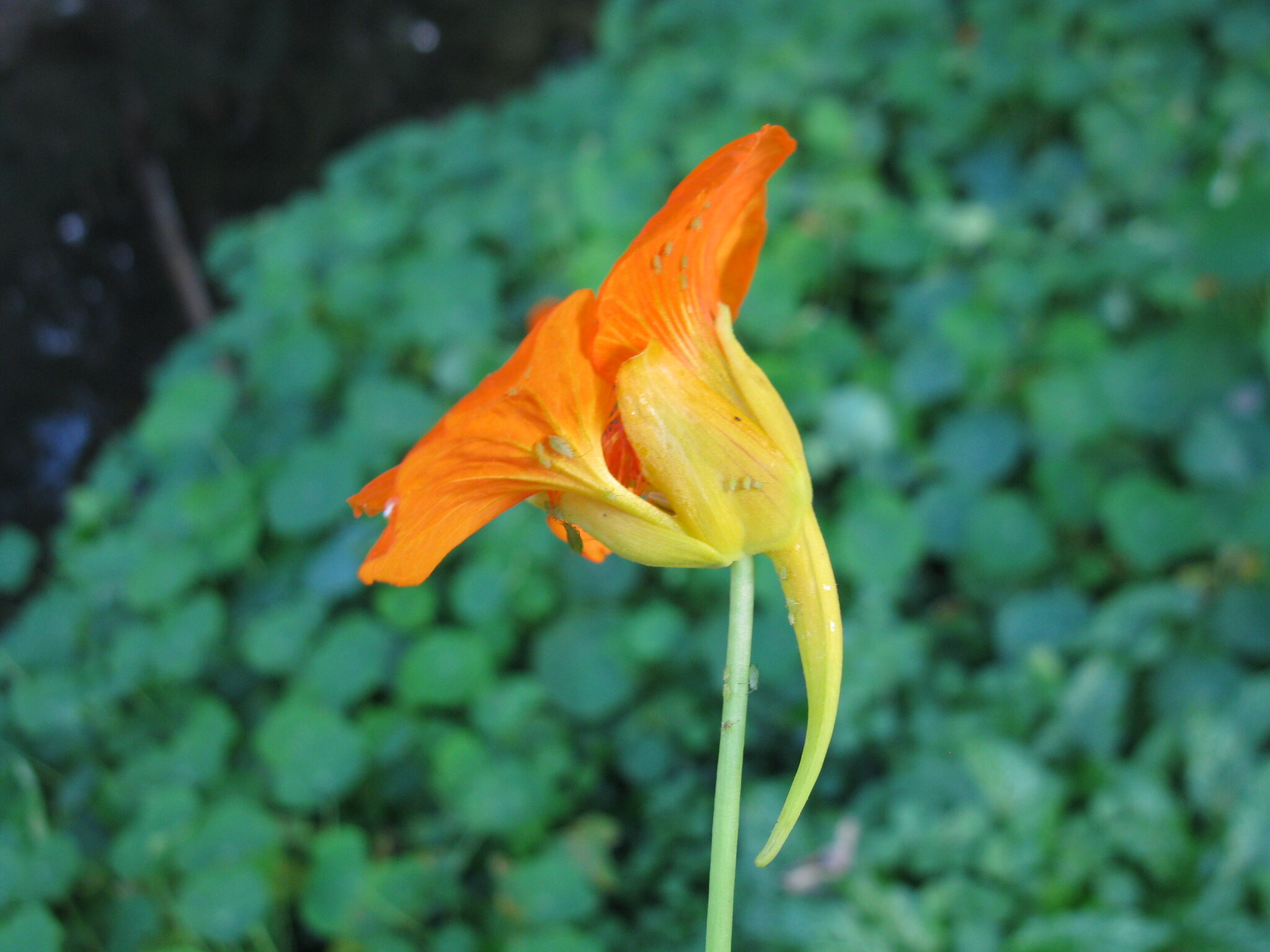
Spreading or climbing fleshy annual herb. Leaves peltate, the blade round to kidneyshaped, 5-15 cm wide, with about 9 radiating veins, the margin wavy. Flowers 3-6 cm wide, generally orange but also red or yellow, the sepal spur to 3 cm or so long; flower stalk to 20 cm or more long; spring to autumn. Fruit about 1 cm long.
Garden origin
This plant is not known in the wild, although it is often listed for S American countries. According to botanical revision it is probably a cultigen of hybrid origin. Garden variations are also the result of crossing a range of species with T. majus.
Naturalised in disturbed areas of NSW and SA, mostly coastal sandy soils in Vic.
A range of cultivars is available with dwarf, erect or trailing habits, variegated leaves, single and double flowers with margins entire, lobed or fringed, and various colour selections.
A range of mostly semi-double or double flower colours and unusual habits is available through the Jewel Hybrids, Gleam Hybrids and Whirlybird Hybrids.
Source: (2002). Tropaeolaceae. In: . Horticultural Flora of South-eastern Australia. Volume 4. Flowering plants. Dicotyledons. Part 3. The identification of garden and cultivated plants. University of New South Wales Press.

Dwarf with leaves speckled creamy white, variable, sometimes referred to as the Alaska Hybrids. Flowers sometimes multicoloured.